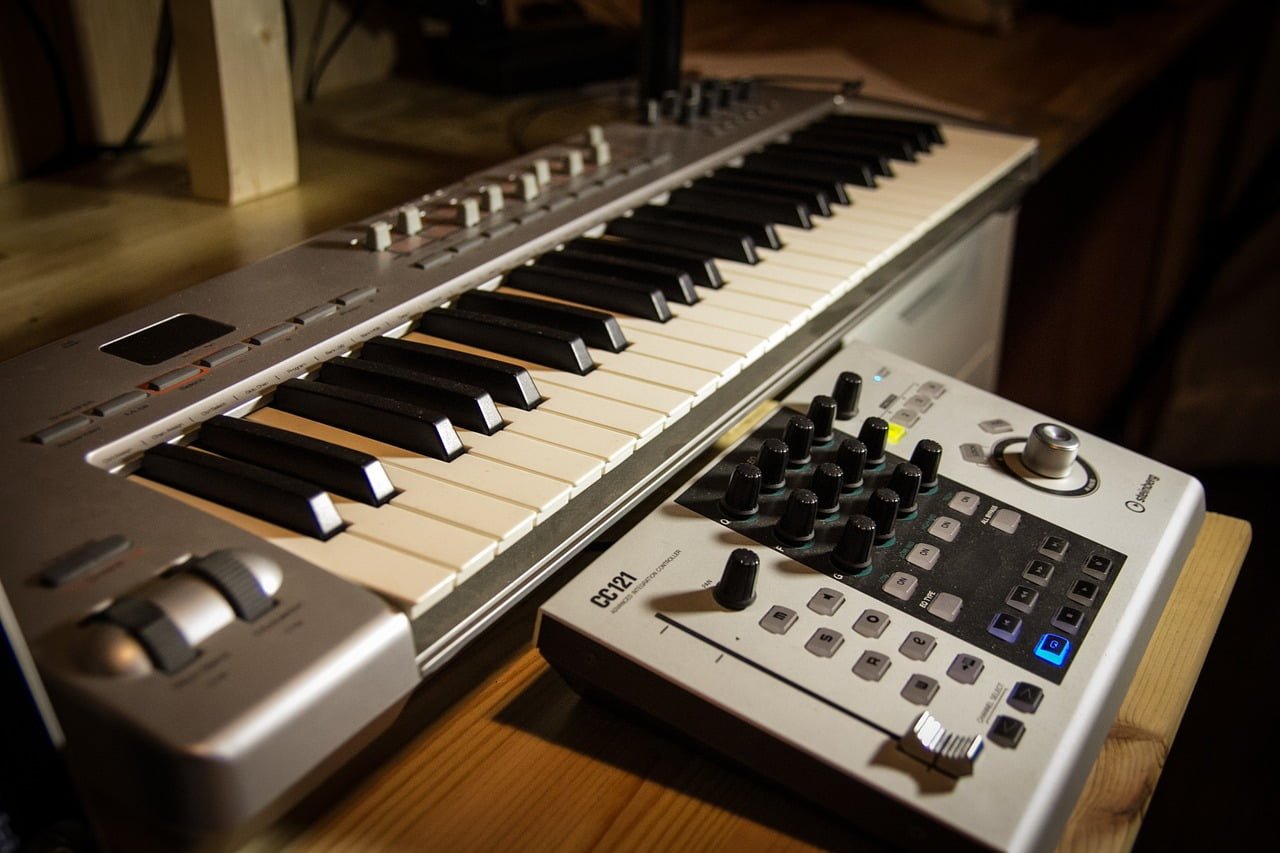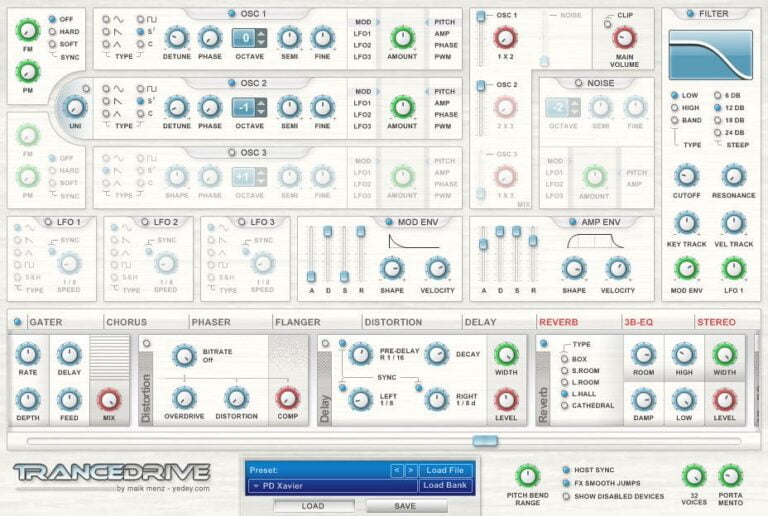Spatial Audio Plugins: Creating 3D Soundscapes in Your Mix
I configure Logic Pro X with spatial audio settings and utilize plugins like dearVR MUSIC for immersive 3D soundscapes. Evaluating spatialization features and selecting plugins supporting various audio formats is vital. Incorporating traditional mixing tools alongside spatial audio plugins guarantees a balanced and cohesive mix. By enhancing mixes with spatial effects, one can transform soundscapes into dynamic, immersive experiences. Leveraging Logic Pro X’s capabilities like Dolby Atmos support further refines spatial perception and audio experiences. Explore the intricate world of spatial audio plugins to master the art of sculpting enthralling 3D soundscapes within your mix.
We are supported by our audience. When you purchase through links on our site, we may earn an affiliate commission, at no extra cost for you. Learn more.
Setting Up Spatial Audio Environment
To establish a conducive spatial audio environment, start by configuring the settings of Logic Pro X to activate spatial audio processing. Spatial audio mixing involves the manipulation of sound in a way that creates an immersive experience for the listener. By integrating a spatial audio plugin like dearVR MUSIC into your workflow, you can craft immersive 3D soundscapes that transport your audience into a rich sonic landscape. These plugins allow for the placement of audio elements in a three-dimensional space, going beyond traditional stereo mixing techniques.
When working with spatial audio, it is essential to contemplate the monitoring setup. Whether using speakers or headphones, accurate spatial audio monitoring is vital to make sure that the immersive effect translates effectively. Additionally, selecting appropriate output devices plays a significant role in optimizing the playback of spatial audio, further enhancing the listener’s experience.
Before diving into spatial audio production, it is crucial to verify that your system meets the necessary requirements for smooth operation. Ensuring that your hardware and software are up to par will contribute to a seamless workflow, allowing you to focus on creating captivating immersive soundscapes. By setting up your spatial audio environment meticulously, you pave the way for a truly immersive auditory experience.
Choosing the Right Plugin
Considering the diverse range of spatial audio plugins available, it becomes essential to assess their compatibility with your digital audio workstation (DAW) for seamless integration. When choosing the right plugin for spatial mixing, several key factors should be taken into account:
- Evaluate Spatialization Features: Look for plugins that offer advanced spatialization features for precise positioning of audio elements within the three-dimensional space. This guarantees that your soundscapes are accurately represented in the mix.
- Support for Multiple Audio Formats: Opt for plugins that support a variety of audio formats such as binaural, ambisonics, and stereo. This versatility allows you to work with different spatial audio formats based on your project requirements.
- Real-Time Processing Capabilities: Check if the plugin provides real-time processing capabilities, enabling you to make instant adjustments to the spatial audio mix during playback. This feature is essential for fine-tuning spatial effects and ensuring a dynamic sound environment.
When selecting a spatial audio plugin, prioritize options that offer a user-friendly interface with intuitive controls. This design not only enhances the efficiency of your workflow but also contributes to a more seamless and enjoyable mixing experience. By considering these factors, you can choose a plugin that meets your spatial audio needs effectively.
Integrating Traditional Mixing Techniques
Incorporating traditional mixing techniques into spatial audio projects enhances the overall balance and polish of the sound. When working on spatial audio mixes, it is important to integrate familiar tools such as EQ, compression, and panning to achieve a cohesive and professional result. By combining these traditional mixing practices with spatial audio plugins, one can elevate the depth and realism of the music production.
Spatial audio plugins offer advanced features that can enhance the immersive audio experience, but they should not overshadow the importance of maintaining balance and coherence in the mix. Utilizing spatial positioning alongside traditional mixing principles guarantees that each element in the mix has its place and contributes to the overall spatial landscape effectively.
To create a truly engaging spatial audio mix, it is essential to strike a balance between spatial effects and traditional mixing techniques. This balance guarantees that the spatial elements enhance the listening experience without compromising clarity or cohesiveness. By seamlessly integrating spatial audio elements with conventional mixing tools, one can craft a mix that not only sounds immersive but also retains the polish and professionalism expected in modern audio production.
Enhancing Mixes With Spatial Audio
Enhancing mixes with spatial audio involves integrating spatial audio plugins to create immersive 3D soundscapes within a music production environment. By utilizing spatial audio tools like dearVR MUSIC, I can enhance mixes by manipulating the placement and movement of sound sources in a virtual 3D space. This technique allows for a more engrossing listening experience for the audience.
- Spatial audio plugins enable precise placement of sound sources in a virtual 3D space.
- These tools help in creating dynamic and engaging listening experiences by adding depth and dimension to the mix.
- dearVR MUSIC provides a user-friendly interface for mixing and mastering, enhancing the overall spatial effects of the music production.
Incorporating spatial audio into my mixes transforms the traditional two-dimensional sound into an immersive 3D sonic landscape. The plugins simulate realistic acoustic environments, revolutionizing the way music is perceived and experienced. By customizing binaural mixes with spatial plugins, I can create enthralling soundscapes that elevate the overall quality and depth of the music mix.
Taking Logic Pro Capabilities Further
To maximize the potential of Logic Pro X’s capabilities in spatial audio production, one can leverage advanced tools and features for creating intricate 3D audio environments. Logic Pro X supports Dolby Atmos, providing a platform for immersive effects in audio production. By utilizing the Spatial Audio Plugins within Logic Pro X, precise positioning of sound elements in a virtual space can be achieved, enhancing the overall spatial audio experience. The 3D Object Panner in Logic Pro X allows for dynamic spatial effects, enabling sound to move realistically within the mix. Incorporating Dolby Atmos Tools further enhances the spatial capabilities, offering a wide range of options for manipulating sound in a 3D space.
Configuring Logic Pro X settings is essential to maximize its full spatial audio mixing capabilities. Adjusting parameters such as room size, reflections, and object positions can significantly impact the spatial perception of the audio. This level of control not only improves the quality of the mix but also provides a more immersive experience for the listener. To sum up, by delving deeper into Logic Pro X’s Spatial Audio features and tools, one can create rich, dynamic, and spatially engaging audio productions with enhanced depth and realism.







